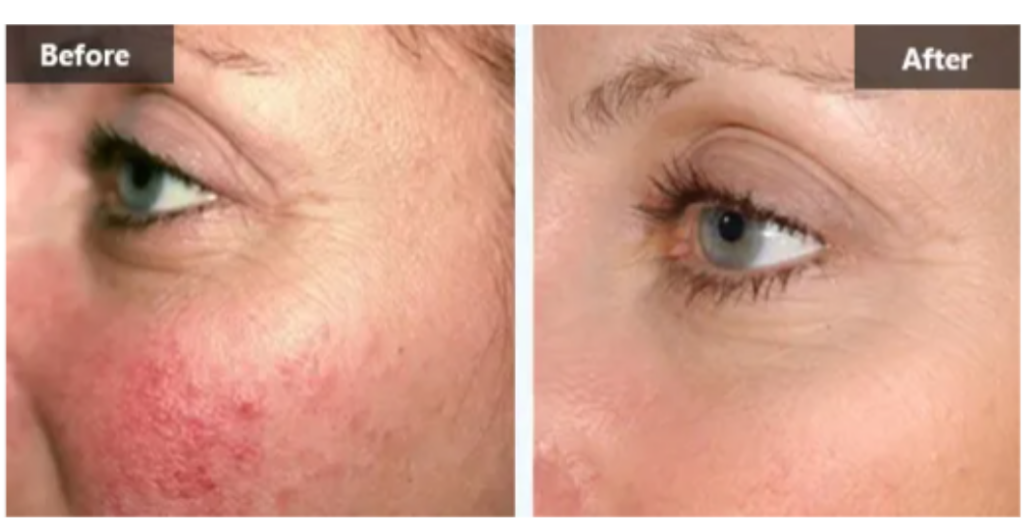Rosacea is a condition that affects more than 14 million people in the United States, making it more common than you may think. This inflammatory condition affects people in the long term, causing redness and rashes, usually on the cheek and nose area. Dr. Ariel Ostad can help you keep your rosacea under control so that you may have a more comfortable life.

Who Can Get Rosacea?
Rosacea is a condition that can affect anyone, regardless of their skin color or condition or age. However, the most commonly affected groups are the following:
- People who have fair skin
- Women
- Middle-aged to older adults
Darker-skinned people may also develop rosacea, although their skin color might mask facial redness. While women get rosacea more frequently than men, men tend to have more severe reactions.
Symptoms of Rosacea
People may experience rosacea on different levels. However, the most common symptoms are the following:
- Facial redness
- Skin thickening
- Rashes
- Eye irritation
- Visible blood vessels
More often than not, rosacea develops progressively, starting with temporary flushing and eventually leading to rashes or breakouts on cheeks and around the mouth. Similarly, it may originally only start at the center of your face, after which it moves to other areas of your body. The best course of action would be to schedule a consultation with Dr. Ostad as soon as you notice any symptoms.
Why Does Rosacea Happen?
It is not always clear why rosacea happens, although it is known that inflammation plays a very important part in it. High skin sensitivity can make your skin react to environmental stressors such as bacteria, strong UV light, exercise, hot showers, alcohol, or dry skin. Genetic factors may also be a cause of rosacea.
Different Ways to Treat Rosacea
Here is how we can treat rosacea or facial redness:
- Topical Products: When you have rosacea, topical products may be used to help reduce redness and inflammation. These products will not constrict your blood vessels so that your rosacea will still be visible. Topical products are often used together with other treatments, as their effect is temporary.
- Oral Antibiotics: Antibiotics may also be used to combat inflammation. If your rosacea leads to the appearance of bumps or pimples, oral antibiotics can keep things under control temporarily.
- CUTERA® Vascular Laser: The CUTERA® Vascular laser is one of the most efficient ways to treat rosacea. CUTERA® Excel® V Laser can be used to treat redness, eradicate blood vessels, and reduce inflammation below your skin without resolving to oral medications, and stop the condition from progressing.
During the consultation, Dr. Ostad will take a look at your skin and determine which treatment works best for you.
For more information about rosacea, you can contact Dr. Ariel Ostad, New York’s premier dermatologist, at 212-517-7900. He will answer any questions that you may have. You may also book an appointment with him by using the online contact form .
Schedule a
Consultation
Consultation
By submitting this form you agree to be contacted via phone/text/email.
 897 Lexington Ave. New York, NY 10065
897 Lexington Ave. New York, NY 10065 212-517-7900
212-517-7900